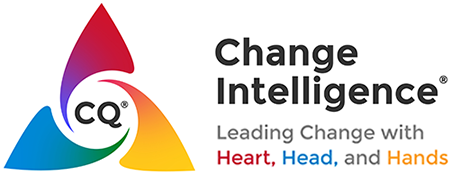In honor of David Letterman’s retirement and his love of “Top Ten Lists”, I took some time this month to reflect on my work with change leaders and on the qualities, behaviors, and mindsets that allow “Change Intelligent“ leaders to get results, build relationships, and be effective in their demanding roles.
Here’s my version of
Dave’s famous Top Ten List: the Top Ten Characteristics of Change Intelligent Leaders. Take a moment to read through these and see how many describe you!
10. They embrace the fact that change is constant and will continue to increase in pace, scope, and complexity; as a result, they proactively get out in front and take charge of change in their organizations, teams, and careers.
9. They balance “getting ‘er done” today with ensuring changes are sustained for tomorrow with scanning for future new horizons.
8. They see the opportunity within shifting circumstances, and help others see new possibilities as well – as opposed to dwelling in fear, confusion, and loss.
7. They start with the Heart – connecting, collaborating, engaging – so people “want it.”
6. They inspire the Head – enlightening, aligning, focusing – so people “get it.”
5. They help the Hands – providing plans, processes, tactics and tools – so people can “do it.”
4. They seek to understand other’s styles and preferences, appreciate and empathize with them, and adapt their behaviors to encourage key stakeholders to partner with them towards positive goals. They follow the “platinum rule” – do onto others as others (not themselves) want to be done onto.
3. When encountering what looks like resistance in others, they reframe that resistance from enemy to ally, understanding that behind every complaint is a request. They surface, explore, and honor resistance. They perceive resistance – like all feedback – as a gift.
2. They look inside themselves first and foremost, reflecting on their style of leading, integrating their experiences, and striving for continuous improvement. They move beyond resiliance, robustness, and agility to antifragility – growing and getting better through stress, not just surviving but thriving.
1. They understand and utilize the tools of “managing” change, while recognizing that the key to effective change is how they themselves are “leading.”
As you take a look at this list, ask yourself;
- What “ah-ha’s” about past successes or missteps – or current project dynamics – do these factors offer insights into for you for deeper understanding, and for positive action?
- Which of these traits do you possess and consistently exhibit?
- Are there areas you would benefit from developing to evolve into an even more effective Change Leader?
As Jack Welch said, “If the pace of change on the outside is faster than on the inside, the end is near.” I believe Jack was referring to the pace of change outside versus inside organizations. I assert the same is true for changes outside and inside ourselves as Change Leaders.
CQ starts with you!

